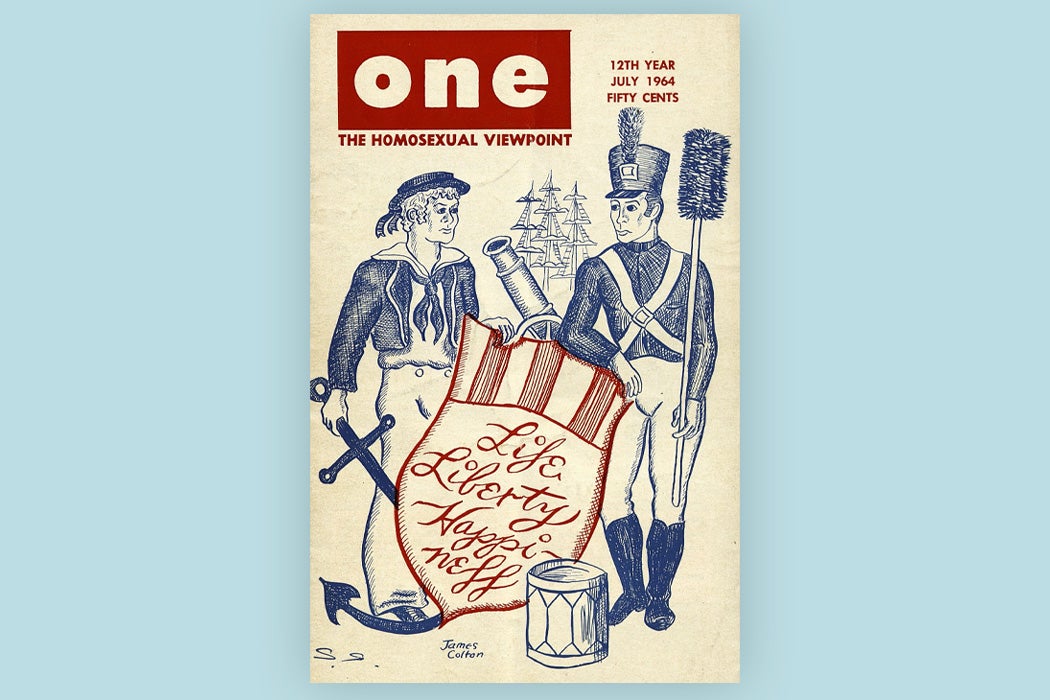During the Cold War, homosexuality was associated with communism and portrayed as a national security threat. The State Department’s 1950 purge of supposed homosexuals under President Harry Truman unleashed “the lavender scare,” which cost thousands their jobs. In the face of these charges of being “un-American,” historian Simon Hall argues, early gay-rights groups professed patriotism and appealed to “the nation’s founding ideals of liberty and equality.”
Hall writes that post-World War II activists insisted that they posed no threat to the country or society. Instead, they claimed citizenship rights and a place in the Cold War’s “fight for freedom.” In this they followed in the tradition of the abolitionists, union organizers, suffragists, and civil rights advocates who invoked the Declaration of Independence and the Constitution in their cause. By demanding inclusion, due process, and equal rights, they argued that they were the ones acting in the best tradition of America and that their opponents were the real un-Americans.
In the spring and summer of 1965, for example, there were gay-rights protests at the White House, Pentagon, Civil Service Commission, and Philadelphia’s Independence Hall. Activists held up signs reading “First Class Citizenship for Homosexuals;” “America, the Land of the Free. For Homosexuals Too?” and “Civil Service Commission Is Un-American.”
The activists argued that excluding homosexuals from government service, including in the military, actually weakened the country by depriving it of well-qualified citizens who wanted to serve. They also argued that it was the fact of an individual’s being in the closet that “created the possibility for blackmail that was, supposedly, at the root” of the national security threat.
After the Stonewall riot of 1969, more radical organizations like the Gay Liberation Front arose to confront police brutality, legal restrictions, and homophobia. Yet Hall argues that the “appeals of Americanism have remained an important feature of the gay rights movement.” He cites the first openly gay man on the cover of a news magazine (Time, 1975): Air Force Sergeant Leonard Matlovich. Winner of the Bronze Star and Purple Heart in the Vietnam War, Matlovich waged a high-profile, though ultimately unsuccessful, campaign to overturn his discharge from the military by appealing to traditional American liberties.
Weekly Newsletter
Likewise, the Gay Activists Alliance, a “leading force” for gay rights during the 1970s, fought to repeal New York’s consensual sodomy law by appealing to the “Spirit of ’76” and the “philosophy of freedom on which the republic was founded.” (That statute would be declared unconstitutional by the New York Court of Appeals in 1980, twenty-three years in advance of the Supreme Court’s decision Lawrence v. Texas, and the state legislature formally repealed it in 2000.)
Decades after the lavender scare, the appeal to Americanism was revived during the era of “don’t ask, don’t tell” in the early 1990s, and then again during the fight over gay marriage in the 2000s. Not surprisingly, supporters of such inclusion appealed to American ideals of liberty and justice for all.







